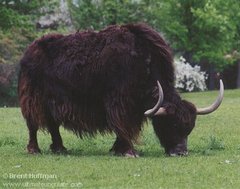\ˈəŋ-gyə-lət\
Ungulate? This was pretty much out of the blue. Why? I asked him.
“Don’t know,” he replied. “It’s just a cool word.”
I am an indulgent parent, so I agreed. Ungulate.
But I have to say my first association with this word was tinged with desperation. When I was a child my family would visit the San Diego zoo on our summer vacation. And every single trip, we would find ourselves marooned mid-afternoon in the farthest, hottest part of the park, trudging past enclosure after enclosure of antelope. I was not impressed then with the majesty of the ungulate. I wanted to sit down. I wanted some shade. If at all possible, I wanted some ice cream. And none of these were forthcoming—only more antelope. Every year we would plan our route to avoid this purgatory: perhaps we could visit the antelope first, on our way to the elephants? Or take a detour by the tigers? Or just hang out all day in the cool darkness of the reptile house?
To no avail. Three o’clock would roll around and there we would be, grumpily contemplating the lesser eland, with miles of baking pathway between us and the nearest lemonade stand. Honestly, if you had asked me then what “ungulates” were, I would have said they are sore-footed, sun-struck misery.
But my beloved son had made a request, so I girded my loins and set forth into the furnace of inquiry! An ungulate is a hairy, hooved land mammal like an antelope, a sheep, or a yak. The term comes from the Latin ungula (hoof), which comes from unguis (nail or claw). These animals run about on their tippy toes, with the weight-bearing toe or toes protected by a hoof—a modified nail that works sort of like a dancer’s toe-shoe, supporting that tiny little bone.
All well and good. But apparently the zoological world has been struggling for some time with what exactly it means to be an ungulate in a taxonomical sense. It seems that when people began making up family trees they started by focusing on how things look. So when they saw creatures with hooves and creatures with “sort of” hooves (like elephants and hyraxes with their big flat nails) they naturally assumed that all of them came from a common ancestor. As a result the category of ungulates got very very large so it could contain all these hooved and sort-of-hooved creatures in one big happy family (well, Order, actually).
Then genetic mapping knocked everything into a cocked hat. Not only did the “sort of” hooved animals come from a completely different branch of the tree from the actually-hooved animals, even the story of the actually-hooved animals proved to be way more complicated than anyone thought. When you look deep into the DNA, it turns out that “even-toed” ungulates like giraffes and hippos are actually more closely related to dolphins than they are to “odd-toed” ungulates like horses and rhinos.
| This is all very peculiar, but that is how science works. I am grateful to the good folks at the Ultimate Ungulate page, which has a great deal more detailed information, plus some really fine pictures of yaks. The upshot, according to these dedicated zoologists, is that “ungulate” should be considered a descriptive term but not a scientifically definitive one. In other words, an ungulate is a hairy land mammal with hooves. But don’t get all technical about it. |
| | Of course when it comes to insistent tridactylous feet, even a rhinoceros cannot compete with “The Irish Washerwoman” which, if you clicked through on the link at left, is now stuck in your head and will remain so for at least the next 6 hours. (Sorry about that.) |
Grimbert's right. It's a pretty cool word.


 RSS Feed
RSS Feed